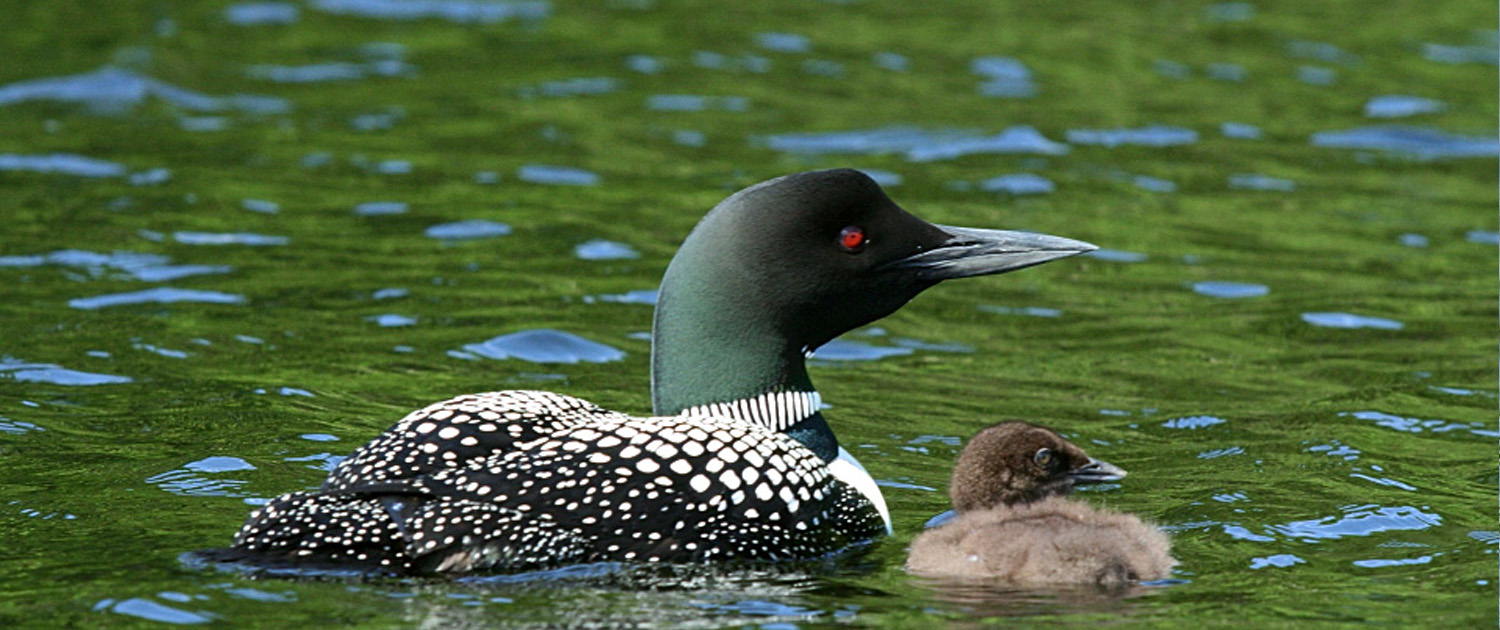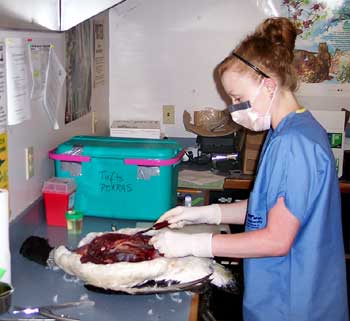Loon nests fail for a variety of reasons. The close approach of people can cause incubating loons to flush from the nest, sometimes resulting in predation of eggs by scavenger birds and mammals. The populations of some of these predators have increased to unnaturally high levels because of the availability of human refuse. Water level changes caused by rain events, or the wake from powerboats, can swamp a loon nest and chill the eggs or wash them out of the nest. LPC has found mercury and other contaminants like PBDE and PFOS in loon eggs at concentrations that have been shown to affect the health and reproductive success of other birds (see Loons as Biomonitors).
Non-viable loon eggs collected from failed nests are weighed, measured, opened and analyzed for embryo development. Egg contents are sent to laboratories that specialize in measuring mercury and other contaminants.
The results of all necropsies and analyses are made available to federal and state wildlife agencies. Egg shells, egg contents, and tissue samples from loon adults and chicks are archived to be available for future reference and research.



